Order Columbiformes Genus OenaSwainson, 1837 Higher classification Oena | Phylum Chordata Family Columbidae Scientific name Oena capensis Rank Species | |
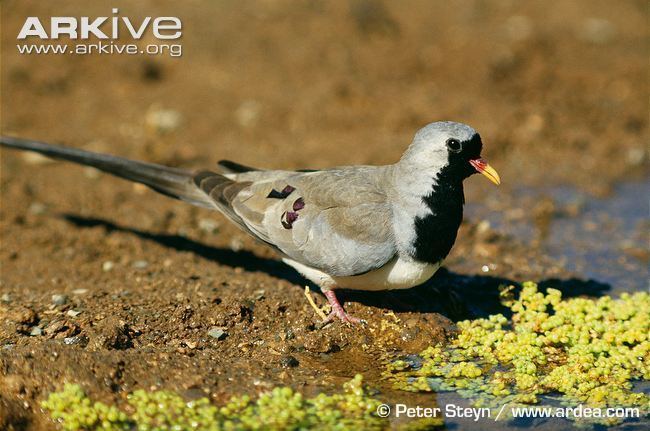 | ||
Similar Caspian plover, Desert lark, Menetries's warbler, Brown‑necked raven, Fan‑tailed raven | ||
Namaqua dove male calling
The Namaqua dove (Oena capensis) is a small pigeon. It is the only species in the genus Oena.
Contents
- Namaqua dove male calling
- African masked doves namaqua doves birdspyaus
- Description
- Distribution and habitat
- Behaviour
- References
African masked doves namaqua doves birdspyaus
Description
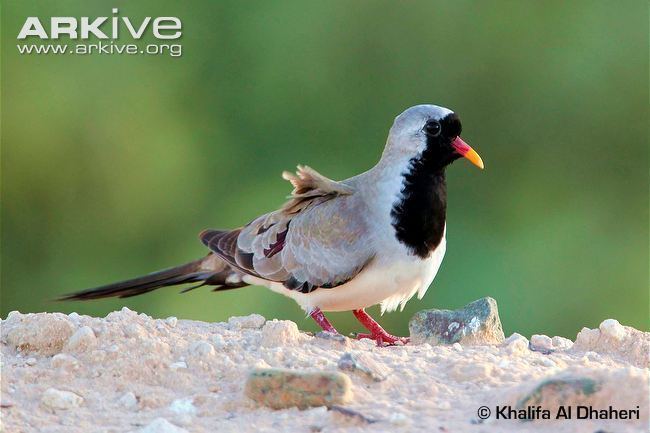
The Namaqua dove is a tiny sparrow-sized pigeon, typically 22 cm in length with a 28–33 cm wingspan, and weighing 40g. It has a very long black tapered tail, and the size and shape have led to comparison with the budgerigar. The plumage is mostly grey apart from a white belly, and chestnut primary feathers which are visible in flight.
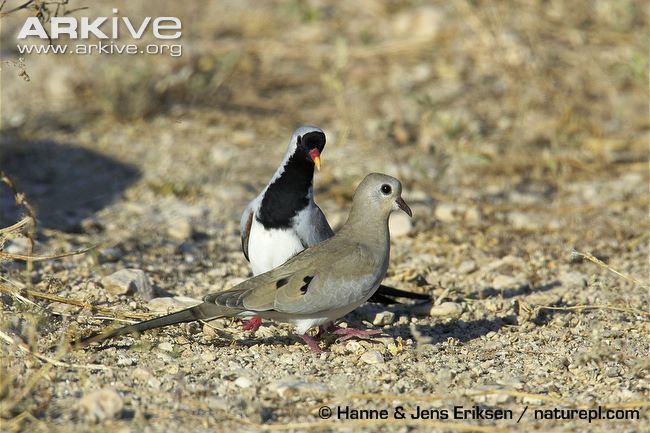
The adult male has a yellow and red beak and a black face, throat and breast. The adult female lacks the black and has a red-based grey bill. Young birds are dark blotched on the wings and shoulders, and otherwise resemble the females.
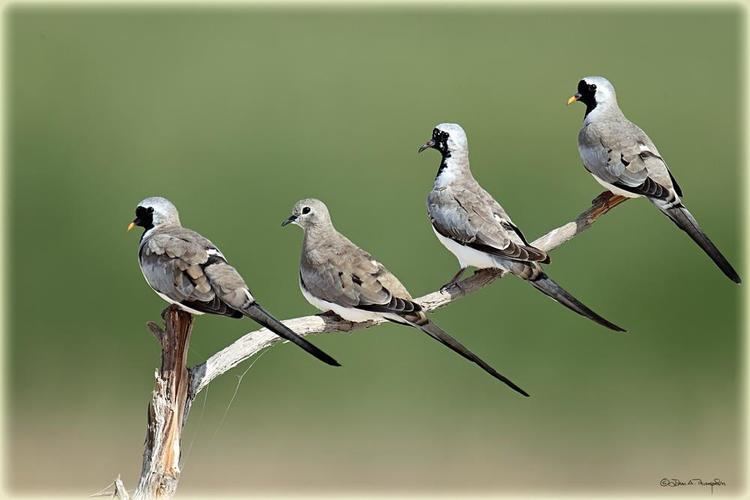
The song is a quiet, short, double hoo, higher on the longer second note kuh-whooo, mournful and frequently repeated.
Distribution and habitat

The dove is a widespread resident breeding bird in Sub-Saharan Africa and Madagascar with its range extending into the Arabian Peninsula southern Israel, Jordan and as far north as Turkey. It is found in near desert with acacia and bushes.
Behaviour
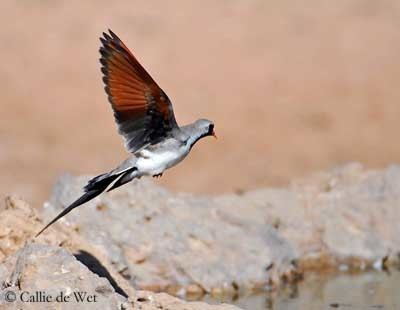
The dove is quite terrestrial, and usually forages on open ground and roadsides. The food is almost exclusively minute seeds, such as those of grasses, sedges and weeds. It is not gregarious, being encountered singly or in pairs, though they may form larger flocks at waterholes. The flight is fast with clipped beats and a tendency to stay low. It builds a stick nest in a bush, and lays two white eggs, which are incubated for 16 days in typical pigeon fashion; the female at night and early morning and the male from mid morning till late afternoon.
